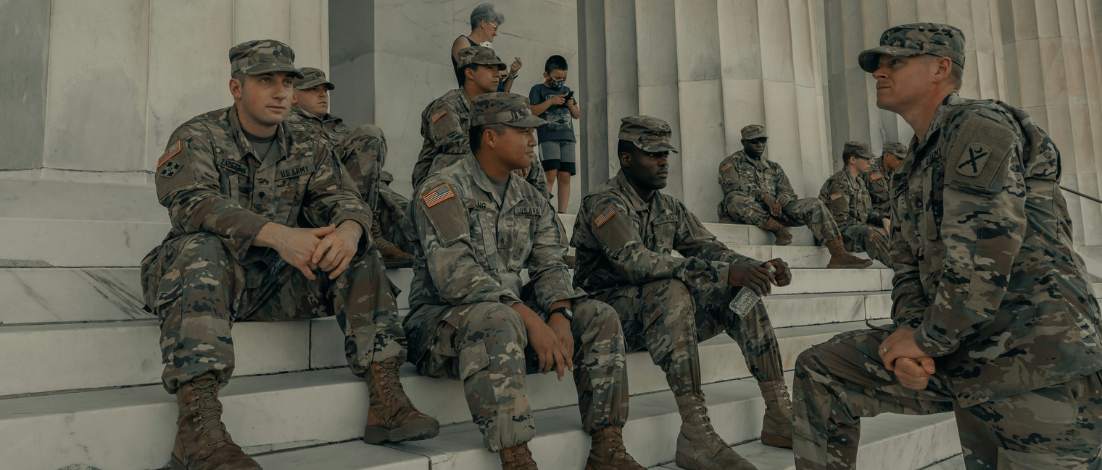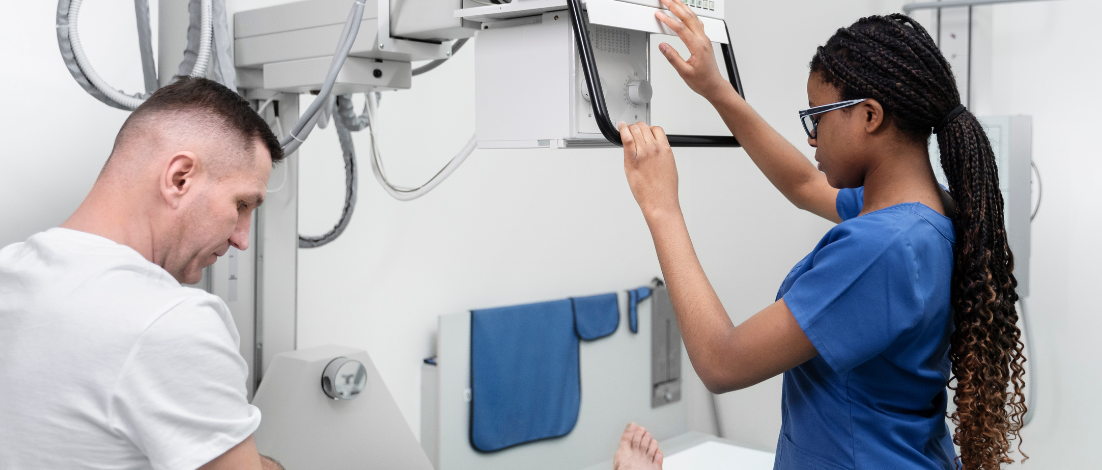To the dedicated men and women who served our nation during periods of peacetime, your commitment and contributions are deeply valued. While your service may not have involved direct combat deployments, the inherent demands and rigors of military duty can still lead to significant and lasting service-connected disabilities.
It’s essential for Peacetime Era veterans to understand the benefits and support available to them through the Department of Veterans Affairs (VA) to ensure their well-being is prioritized.
According to the most recent data from the Veterans Benefits Administration’s Fiscal Year 2024 Annual Benefits Report, certain health conditions are particularly prevalent among veterans who served during peacetime. This guide delves into the top 5 most common service-connected disabilities experienced by this vital group of veterans.
Understanding Service Connection: The Basis for Your VA Benefits
The fundamental principle for receiving VA disability benefits, regardless of your era of service, is service connection. This means that your current disability must be directly linked to your military service, even if that service occurred during a period of relative peace. The VA recognizes that a wide range of conditions can arise during or be aggravated by the demands of military training, the performance of regular duties, and specific incidents that may occur outside of active conflict zones.
To successfully establish service connection, Peacetime Era veterans typically need to demonstrate the following:
- A current medical condition: You must have a diagnosed physical or mental health condition confirmed by a medical professional.
- An in-service event, injury, or illness: A specific event, injury, or illness must have occurred during your military service in the Peacetime Era that you believe caused or worsened your current condition. This could include injuries sustained during training exercises, illnesses developed due to environmental factors on base, or the cumulative effects of physically demanding duties.
- A medical nexus (link): A qualified medical professional must provide a well-reasoned opinion stating that your current condition is “at least as likely as not” due to the in-service event, injury, or illness that occurred during your Peacetime Era service. While presumptive conditions are less common for peacetime service compared to wartime deployments, the fundamental requirement of establishing a clear medical nexus remains crucial.
Our team of licensed medical professionals may help you gather the medical evidence that matters, so that you can tell the true story of your condition to support your personal injury or government benefit case. Begin your FREE Medical Evidence Consultation today.
In-Depth Look at Most Prevalent Conditions Among Peacetime Era Veterans

Based on the Fiscal Year 2024 data, the following conditions represent the top 5 most prevalent service-connected disabilities for Peacetime Era veterans:
- Tinnitus (12.3% of SC Disabilities): Tinnitus, the perception of sound when no external noise is present (often described as ringing, buzzing, clicking, or hissing), affects a significant 398,989 Peacetime Era veterans, representing 12.3% of all service-connected disabilities for this era. Exposure to noise from machinery, training exercises involving loud equipment, and other military activities during peacetime service can be significant contributing factors.
Establishing service connection often involves documenting your Military Occupational Specialty (MOS) or specific duties that exposed you to loud noises during your Peacetime Era service. Service Treatment Records (STRs) may contain audiograms (hearing tests), and lay statements from yourself or fellow veterans detailing noise exposure can be valuable supporting evidence. Tinnitus can be claimed as a separate condition or as secondary to hearing loss.
Long-term management often includes coping strategies, sound therapy, and addressing any underlying conditions like hearing loss or anxiety, all supported by VA healthcare.
FAQ: I worked around loud generators on base during peacetime. Could my tinnitus be service-connected?
Yes, consistent exposure to loud noise, even in peacetime, can cause tinnitus. You’ll need a current diagnosis and a medical opinion linking your condition to your specific duties and noise exposure during your service.
- Hearing Loss (8.9% of SC Disabilities): Affecting 288,659 Peacetime Era veterans, hearing loss refers to a partial or total inability to hear. Similar to tinnitus, exposure to noise from training, the operation of various types of equipment, and other military activities during peacetime service can lead to hearing impairment.
Service connection often involves documenting your MOS or specific duties with significant noise exposure during your peacetime service. Service Treatment Records (STRs) may contain audiograms. Even without specific in-service documentation, lay statements detailing your noise exposure can be important evidence.
Hearing loss is often progressive, and long-term management includes regular hearing evaluations and the use of appropriate assistive devices, such as hearing aids provided by VA healthcare, to maintain your quality of life.
FAQ: I didn’t think peacetime service could cause hearing loss. How could mine be service-connected?
While combat noise is often highlighted, many peacetime military jobs involve significant noise exposure (e.g., mechanics, flight line personnel, heavy equipment operators). If your duties involved such exposure and you have a current hearing loss diagnosis, it can be service-connected with a medical nexus.
- Paralysis of the Sciatic Nerve (4.5% of SC Disabilities): Paralysis or neuropathy of the sciatic nerve, causing pain, numbness, tingling, and weakness in the lower back, hip, leg, and foot, affects 146,221 Peacetime Era veterans. This condition can result from injuries sustained during training exercises, heavy physical labor, or other incidents that may have occurred during peacetime military service.
Documenting a specific in-service injury or event that could have caused nerve damage is crucial for establishing service connection. Medical evaluations linking your current sciatic nerve issues to your military service are also necessary.
Long-term management often involves pain medication, physical therapy, and in some cases, surgery, all available through VA healthcare.
FAQ: I injured my back during a training exercise in peacetime and now have leg pain. Could this be service-connected?
Yes, injuries during training, even in peacetime, can lead to service-connected disabilities like sciatic nerve issues. You’ll need documentation of the training incident and a medical opinion linking your current symptoms to that injury.
- Limitation of Flexion, Knee (3.5% of SC Disabilities): Limitation of flexion of the knee, referring to a reduced ability to bend the knee joint, affects 115,272 Peacetime Era veterans. This can result from injuries sustained during training, participation in physical activities, or the general wear and tear associated with military service, even during peacetime.
Service connection often involves documenting a specific in-service injury to the knee or the onset of pain and restricted movement during your peacetime service. Service Treatment Records (STRs), physical therapy notes, and imaging results (like X-rays or MRIs) can be important evidence.
Long-term management can include physical therapy, pain medication, bracing, and in some cases, surgery, all provided through VA healthcare.
FAQ: I developed knee pain and stiffness during my peacetime service due to constant marching. Can this be service-connected?
Yes, the repetitive stress of military duties, even in peacetime, can contribute to musculoskeletal conditions like limited knee flexion. Documenting the onset of the issue during your service and obtaining a medical nexus is key.
- Scars, General (2.9% of SC Disabilities): Injuries sustained during military service, including accidents, training incidents, or surgical procedures, can result in various types of scars. These scars affect 94,959 Peacetime Era veterans receiving disability benefits and can be painful, disfiguring, and limit movement.
Service connection is usually straightforward if the injury that caused the scar occurred during your military service and is documented in your STRs.
Long-term management can include pain relief measures, physical therapy if the scar restricts movement, and in some cases, cosmetic procedures, all accessible through VA healthcare.
FAQ: I had surgery while on active duty during peacetime. Is the resulting scar service-connected?
Yes, scars resulting from surgery or injuries that occurred during your peacetime military service are typically considered service-connected, provided there is documentation in your service records.

Beyond the Most Prevalent: Other Service-Connected Conditions
This list highlights the top 5 most common conditions, but Peacetime Era veterans may experience a wide range of other service-connected disabilities resulting from their time in uniform. If you believe your health condition is linked to your military service, even if it’s not on this list, contact our Medical Specialists for a free consultation.
Your Service is Recognized and Supported
The dedication and contributions of Peacetime Era veterans are deeply valued. Understanding and accessing the VA benefits you have earned is a vital step in ensuring your health and well-being is prioritized.
Remember, veterans deserve the support they’ve earned. If you want to learn more about medical evidence, contact our team of experts. Start your FREE Medical Evidence evaluation today or watch real testimonials and stories of our clients to learn more.











